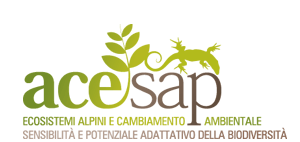| 1. The longitudinal distribution of macroinvertebrates was investigated in June, August and September 1996 and 1997 in the Conca glacial stream and its tributary (Italian Alps; 46°N, 10°E). The principal aim was to test the Milner & Petts (1994) model that predicts the succession of faunal groups downstream of the glacial snout in relation to water temperature and channel stability. The effect of a non-glacial tributary on the taxonomic richness and density patterns occurring in the glacial stream was also considered. 2. Channel stability showed an atypical longitudinal trend in the Conca glacial stream, being high in the upper part with Pfankuch Index values between 30 and 33. Water temperature exceeded 6 °C at all stations, with average values below 2 °C occurring only within 700 m from the glacial snout. 3. Taxonomic richness and diversity increased downstream. Taxonomic richness in the glacial stream (at about 1.5 km from the glacier) was comparable with the tributary and the reach after the confluence. Abundance also increased downstream in the glacial stream, but not as greatly as the number of taxa. 4. At higher taxonomic levels, the community structure in the tributary stations appeared to be similar to the two stations in the glacial stream just upstream of the confluence. The effect of the tributary was evident mainly at the genus or species level of the Chironomidae community. Some taxa found in the non-glacial stream (e.g. Cricotopus fuscus, Eukiefferiella coerulescens, Metriocnemus sp., Paratrichocladius rufiventris, P. skirwitensis, Rheocricotopus effusus and Smittia sp.) were found also in the Conca stream but only after the confluence. 5. The upper glacial reach (within 700 m from the glacier snout) was dominated by the chironomid Diamesa spp. Less than 400 m from the glacier other Diamesinae (Pseudokiefferiella parva) and a few Orthocladiinae, especially Orthocladius (Euorthocladius) rivicola gr., colonized the stream. Some Diamesinae maintained relatively dense populations at mean water temperature around 5 °C, while some Orthocladiinae colonized reaches with mean water temperature <3 °C. 6. Contrary to the Milner & Petts (1994) model, Dipteran families such as Empididae and Limoniidae were more abundant in the upper stations than Simuliidae; non-insects such as Nematoda and Oligochaeta were also numerous at some sites. Leuctridae, Taeniopterygidae and Nemouridae were the first Plecoptera to appear upstream, while Chloroperlidae were restricted to the lower reaches. Among Ephemeroptera, Heptageniidae were more abundant than Baetidae in the glacial sites. 7. In this glacial system channel stability and maximum temperature did not show the expected longitudinal trend and thus a typical kryal community was confined within 700 m from the glacier snout where summer mean water temperature was below 4 °C. |






